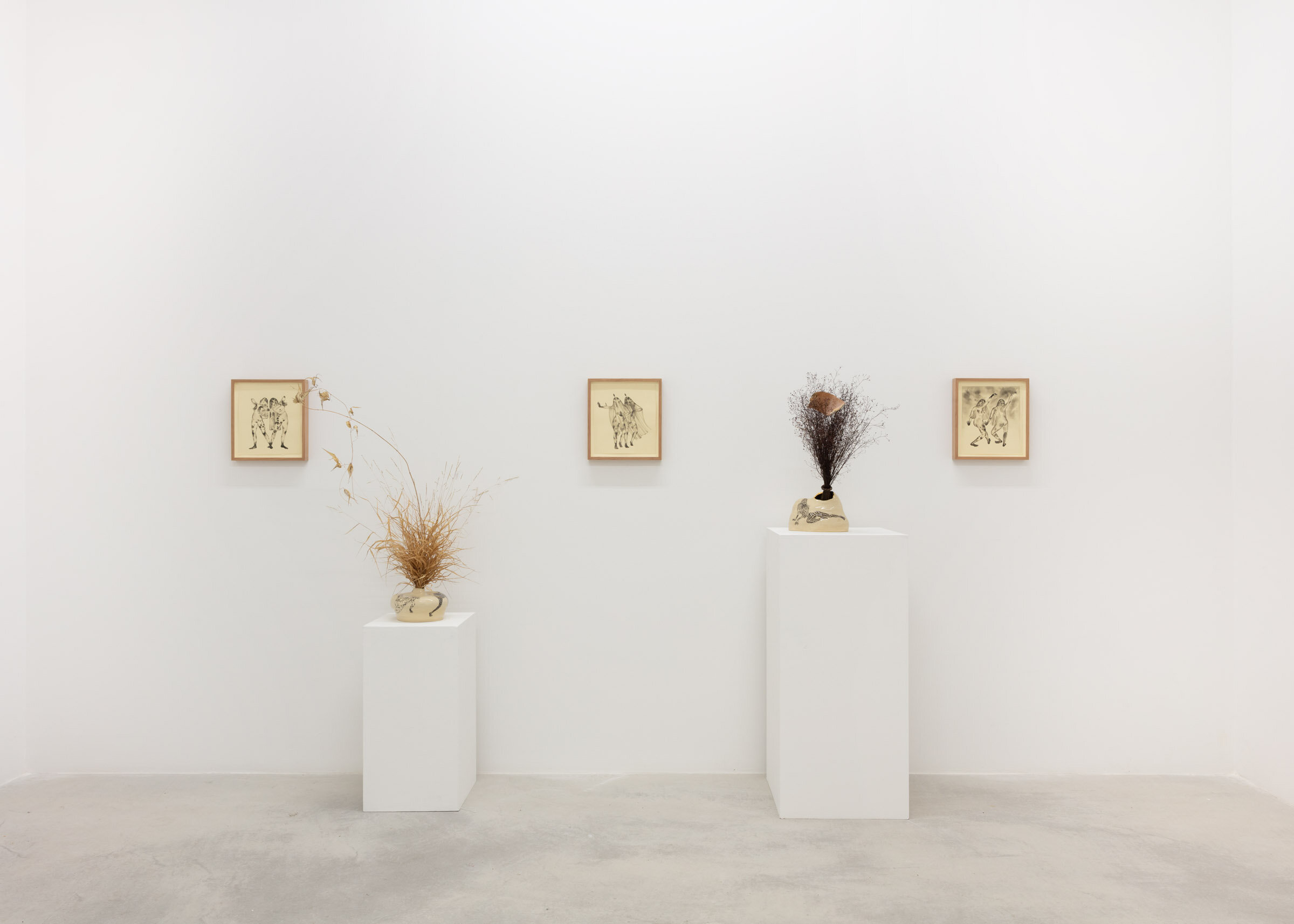Patel brown Gallery | 21 Wade Ave
Marigold santos | hiwa-hiwalay
November 21 2020 - january 16 2021
Patel Brown is proud to present, hiwa-hiwalay, a solo exhibition by Moh’kins’tsis- / Calgary-based artist Marigold Santos. The meaning of hiwa-hiwalay translates from Tagalog / Filipino to English as “loosely bound” or “separate.” That this text begins with a translation reflects a cornerstone in Santos’s practice in which the artist embraces a visual language that translates a personal experience of diaspora upon her migration from the Philippines to Canada as a young child. The means of expression become other-worldly spaces, shrouded figures, and shape-shifting asuangs from Philippine folkore that speak to multiplicity, adaptation, and empowerment catalyzed by an experience of fragmentation and multifarious self-hoods borne through diaspora.
hiwa-hiwalay’s capacity to express something that is both bound and separate describes a key feature of the asuang (aswang), a character in Philippine mythology that manifests in multiple forms according to regional folklore. One version is the manananggal that translates as “to separate.” Appearing human by day, the manananggal severs in half by night, discarding its lower half while its upper body flies in moonlight to enact violent consumption. The two parts must rejoin by dawn, generating a ritual cycle of attachment and detachment that functions as a form of survival. Santos imagines the manananggal as capable of reconstituting with landscapes, flora, and objects, expanding their physical form while reclaiming their expansive power once reduced by Spanish colonial inversions. It could be said that while viewing the works in hiwa-hiwalay we follow a single asuang as they self-sever, re-join, and transform across the mediums of ink, paint, and clay, rendering the asuang’s capacity for multiplicity while conceptually enacting a resilient state diaspora.
In the drawings shroud (itik itik) I, II, and III (2020) Santos depicts asuangs enveloped by transparent shrouds that perform, in the artist’s words, “as conceptual descriptions of experience,” and allude to piña cloth, a gauze-like textile laboriously spooled by knotting the long and fibrous inner layer of pineapple leaves. The transparent quality of ink on paper dovetails with Santos’s attraction to the uncontrollable nature of the medium. Once applied to paper or skin (as in Santos’s tattooing practice) ink cannot be altered nor reversed. The ink blots on the asuangs bodies shift between representations of dirt, blood, the cosmos, and general fluidity that function as visual markers of experience, experience that can be revealed or concealed, shared or shrouded, through choice and self-empowerment.
In the paintings shroud holding sampaguita and shroud sprouting sampalok (2020) voided landscapes suggest hybrid spaces of movement and transformation. The atmospheric backgrounds of the works depict dusk, a transformational hour for the asuang, in which the spectrum of light represents a state of transition and multiplicity. Elements that resemble linear stratification draw upon the geological landscapes of the Badlands in Alberta as well as memories of the Philippines, creating a hybrid and other-worldly space where the two fuse together.
Both paintings depict the hand of an asuang threaded with flora of the Philippines that are joined in a coiled bind, appearing just intertwined or just on the verge of unravelling. This cycle of boundedness and separation speaks to how things that are woven have the capacity to separate and then rejoin, each time stronger for their resilient capacity to come together again. The white sampaguita flower and sampalok (tamarind) pods describe a fragment of a whole, representing the ways in which a plant can be severed from its root and continue to grow while paralleling how an asuang’s severed limb can continue to enact self-determination. The flora also represents fragmented memories of the Philippines, including visual memories of Catholic saints adorned in garlands of sampaguita, their evocative jasmine scent swirling with that of tamarind and notes of Spanish colonization. In these paintings, both fruit and flower reflect Santos’ explorations and research that acknowledges the histories of colonization in her heritage, and critically responds through the subversion of these fragmented elements.
Scattered throughout hiwa-hiwalay are ceramics sculptures, their clay and shapes performing as surrogate bodies that become more resilient after each firing. Santos draws imagery on the underglaze of the ceramics, mirroring the process of applying ink under skin, both of which absorb and seal the artist’s actions into organic surfaces. The manananggal appears in full figure, as hands, flora, and snakes, even loose teeth, culminating in multifarious imagery and fragmented identities that have the capacity to literally fragment as breakable objects. The magic of ceramics is that when they break, each separate fragment remembers the piece once beside it—a memory of a greater whole that has the capacity to bind together again.
— Clara May Puton












